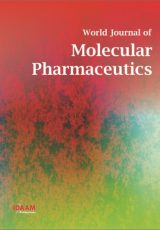Volume 1
January-March 2023
Prajakta D Suryawanshi, Jameel Ahmed S Mulla
Abstract:
With progress in biotechnology, combinational chemistry and genomics, a broad variation of new, potent and specific therapeutics being formulated. But because of common problems like poor stability, high potency and low solubility of drugs the drug delivery can affect the efficacy and potency for commercialization. Thus there is a need to develop more effective, safe methods and devices for drug delivery. Among the various methods and devices that have been utilized for controlled delivery, microspheres are one of the most important and common type of drug delivery system. Microspheres represent a most important part of novel drug delivery system by integrity of their desired carrier capacity and small size. Because of their short residence time, bioadhesive properties can be linked to microspheres to produce mucoadhesive microspheres. Bioadhesion is a condition in which two materials, at least one of which is biological in nature and are carry together for extended period of time by means of interfacial forces. It is a carrier linked drug delivery system in which particle size if microspheres range from 1-1000 µm in diameter they having a core of drug and outer layers are completely of polymers as coating materials. Mucoadhesive microspheres show merits like improved bioavailability of drug because of more surface to volume ratio, efficient absorption, also they increase the intimate contact of drug with the mucus membrane, targets the drug at the specific absorption site as well as sustained and controlled delivery of drug from dosage form. The aim of the present study is to provide an overview of several features and aspects of mucoadhesive microspheres based on different methods of preparation, use of various polymers, methods of evaluation of mucoadhesive microspheres and their approaches in drug delivery.
Keywords: Microspheres, Bioadhesion, Bioavailability, Polymers.
Aishwarya C Patil, Akshay R Yadav
Abstract:
Plants are the medicines of nature and have been used for food and medicine since ancient times by human beings on earth. Today, there are global trends towards the discovery of herbal medicines in plants to bring them to the market through an effective human drug delivery method. The basic idea behind it is that each disease’s cure is concealed in nature. The distribution of herbal products, however, also needs to be changed in order to achieve sustained release, improve patient compliance, etc. Due to packaging, standardization, extraction and detection difficulties, previous herbal drugs could not attract scientists to the modifications of novel drug delivery systems. But now, with advances in technology, modern drug delivery systems (NDDS) are opening the door to the development of a new herbal drug delivery system. Using advanced toxicity safety methods, stability improvement, enhanced bioavailability of herbal formulations, physical and chemical degradation protection can be achieved. In order to achieve modified delivery of herbal drugs by increasing the therapeutic benefit as well as reducing toxicity, novel drug delivery technologies have gained significance. The existing reviews include information on different novel approaches used to enhance the safety and efficacy of phytomedicines and to apply novel formulations.
Keywords: Vesicular Drug Delivery Systems, Drug Delivery Carriers, Archaesome, Pharmacosomes, Virosomes, Proteasomes.































